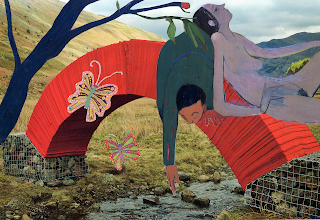Not to be defeated by the
coronavirus pandemic, Tacoma Musical Playhouse is doing a virtual performance
of American Way by Jeremy Gable, one night only, Friday, June 12 at 7:30 p.m.
Faced with disappointing comic
book sales, benefit packages and retirement, four superheroes take a break in
their secret cafe to reminisce about the good old days. But when an unexpected
tragedy hits the town, they are forced to deal with being powerless for the
first time in their lives.
“Gable’s distinctive voice offers
great promise… His lacerating piece evokes a tragicomic
Kubrick-esque brilliance.” –
BACKSTAGE WEST
“Wickedly funny stuff.” – L.A.
TIMES
“A superhero parody with a lot more
brewing beneath the surface.” – L.A. WEEKLY
The Cast
CARL OLSON (Crescent Wonder)
Carl is a retired teacher from South Kitsap High School in
Port Orchard. His last full-time assignment included teaching Stagecraft,
Beginning Acting, and serving as the Win Granlund Performing Arts Center's
technical director and directing thirteen productions during his tenure. Carl
has been active in area community theater since 1985, both as an actor and
director…many wonderful shows and memories. Carl is excited to be once again
working with his former student, Erik Furuheim.
RAFE WADLEIGH (Fire Bang)
Rafe is a teacher and musician from Tacoma, Washington. When
he is not directing choirs or playing rock and roll, he can be found on stage
mugging for a laugh (and a few tears) in local musicals. Rafe is a father to
two teens, Ava and Dean, and his wife Dawn is a midwife. He is thrilled to be a
part of this unique production surrounded by talented artists.
ARIEL VAN DYKE (Mandible Maiden_
Ariel is a native Washingtonian, having taken classes at
Pacific Lutheran University and been a Tacoma School of the Arts graduate. She
is inspired not only by music but visual and digital art in her spare time. She
can be seen at the Tacoma Musical Playhouse every so often, and dedicated each
performance to her husband, son, and daughter.
BENJAMIN USHER (Pungent Huboldt)
Benjamin grew up in Kitsap county. He headed east to
graduate from Central Washington University with a BFA in Musical Theatre,
apart from pursuing a career in performing, he also enjoys building sets and
solving problems in creating magic off-stage.
Producer, Director & Sound Design ERIK FURUHEIM ()
Erik resides in Newport, Oregon, with his beautiful and
talented 10-year daughter. In the past two years, he has been in numerous
productions all over the US, portraying “The Big Bopper” in Buddy: The Buddy
Holly Story. In his daily life, he is a Network Security Engineer for
Checkpoint Software and loves the job and flexibility it gives him to perform
anywhere in the world and spend quality time with his kiddo. Erik was last seen
on TMP’s stage in TheFull Monty, and Buddy: The Buddy Holly Story (Big Bopper).
He hopes you enjoy the presentation and hopes that everyone is safe and sane.
Donation – Pay What You Can ($5.00 minimum) - All proceeds
go to Tacoma Musical Playhouse
Order the link Online:
www.tmp.org | Season + Tickets
(Tab) | Virtual Events
https://tmp.org/index.php/virtual-shows/



